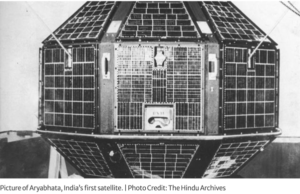IASbaba's Daily Current Affairs Analysis
Archives
(PRELIMS & MAINS Focus)
Category: ENVIRONMENT
Context: Climate change could be resulting in higher levels of arsenic in rice, potentially increasing lifetime cancer and health risks for people in Asian countries by 2050, according to a new study published in The Lancet Planetary Health journal.
Decoding the context: The presence of arsenic in rice has long been known as a problem. Almost all rice contains arsenic. The harmful, naturally occurring chemical can accumulate in the soil of paddy fields, leaching into the grains of rice grown there. But the amounts found can vary considerably from well below the recommended limits set by regulatory bodies to several times higher.
Learning Corner:
- Arsenic (As) is a naturally occurring, odorless, tasteless metalloid found in the earth’s crust, soil, water, and air.
- Arsenic can be found in various forms, including organic and inorganic. Inorganic arsenic is generally considered more toxic than organic arsenic.
- Sources of Arsenic Pollution
- Natural Sources
- Weathering of arsenic-rich rocks (e.g., Ganga-Brahmaputra basin)
- Volcanic eruptions and geothermal activity.
- Anthropogenic (Human-Induced) Sources
- Use of arsenical pesticides and herbicides.
- Mining and smelting of arsenic-containing ores.
- Burning of fossil fuels, especially coal.
- Industrial effluents and waste disposal.
- Natural Sources
- According to new study, rising temperatures and CO2 alter soil chemistry, increasing arsenic absorption in rice, posing higher health risks in rice-dependent Asian countries by 2050
- Another concern is arsenic in Groundwater –
- Arsenic contamination in groundwater is a public health emergency in parts of Eastern India, particularly in: West Bengal, Bihar, Uttar Pradesh, Assam, Jharkhand, Punjab (recent studies).
- Often caused by the leaching of arsenic from sediments in the Ganges-Brahmaputra-Meghna (GBM) plain due to overextraction of groundwater.
- Health Effects of Arsenic Exposure
- Short-term: Vomiting, abdominal pain, diarrhea.
- Long-term (chronic exposure): Skin lesions, hyperpigmentation, Arsenicosis (chronic arsenic poisoning), Cancer, Cardiovascular diseases, Neurotoxicity and developmental effects in children.
Source : The Hindu
Category: ECONOMY
Context: The Reserve Bank of India announced amendments to the Liquidity Coverage Ratio (LCR) framework.
Decoding the context: Reserve Bank of India has allowed banks to set aside a lower stock of liquid assets against deposits raised through digital channels in the new guidelines.
Learning Corner:
- The Liquidity Coverage Ratio (LCR) is a Basel III requirement that ensures that a bank has sufficient high-quality liquid assets (HQLAs) to survive a 30-day period of significant financial stress.
- It aims to improve short-term resilience of banks.
- The ratio should be ≥ 100%, meaning a bank should have liquid assets equal to or more than the net cash outflows expected during a stress period of 30 days.
- High-Quality Liquid Assets (HQLAs) Include: Cash, Central bank reserves, Government securities (like G-Secs), High rated Corporate bonds (in some cases, with haircuts).
- High-Quality Liquid Assets (HQLAs) are those which are easily and immediately convertible into cash with minimal loss.
Purpose of LCR:
- Prevents bank failures due to liquidity crunch.
- Promotes banking system stability.
- Ensures confidence during financial stress scenarios.
- Implementation in India: Implemented by RBI in a phased manner starting 2015, fully in effect by January 1, 2019.
Source : Livemint
Category: ENVIRONMENT
Context: India, the world’s second-largest emitter of nitrous oxide (N₂O) after China, faces significant climate risks, as N₂O has a global warming potential nearly 300 times greater than that of carbon dioxide (CO₂).
Decoding the context: Nitrogen is the fifth-most abundant element in the universe and the most prevalent gas in the Earth’s atmosphere, comprising approximately 78% of the air—nearly three times more than oxygen. Although it accounts for only about 3% of human body weight, nitrogen is essential for life, playing a critical role in the structure of amino acids, proteins, and nucleic acids.
Learning Corner:
Major Nitrogen Compounds Relevant to Global Warming:
- Nitrous Oxide (N₂O)
- A potent greenhouse gas.
- Global warming potential (GWP) is about 298 times that of CO₂ over a 100-year period.
- Third most significant greenhouse gas after CO₂ and methane (CH₄), contributing ~6% to global radiative forcing.
- Has a long atmospheric lifetime: ~114 years.
- Also contributes to stratospheric ozone depletion.
- Ammonia (NH₃)
- Indirectly affects global warming by contributing to aerosol formation.
- Not a direct GHG, but affects air quality and ecosystem health.
Sources of Nitrogen Emissions:
- Natural Sources: Microbial activity in soils and oceans, Forest fires.
- Anthropogenic (Human-Induced) Sources:
- Agriculture: Use of synthetic fertilizers, animal manure → microbial processes in soil release N₂O.
- Biomass burning.
- Wastewater treatment.
- Fossil fuel combustion.
- Industrial processes (e.g., nitric acid production).
Environmental Impact of Nitrogen Emissions:
- Enhances global warming due to high GWP of N₂O.
- Depletes stratospheric ozone, worsening UV exposure risks.
- Causes eutrophication of water bodies.
- Leads to acid rain formation (via NOx).
- Climate feedback: Warmer soils enhance microbial N₂O production, amplifying emissions.
Source : The Hindu
Category: POLITY
Context: The Supreme Court today declined to pass any directions on a plea seeking deployment of paramilitary forces in West Bengal in light of the violence that broke out in Murshidabad over the Waqf (Amendment) Act.
Decoding the context: The petitioner sought for immediate deployment of paramilitary forces and the implementation of Article 355 of the Constitution.
Learning Corner:
- Text of Article 355: “It shall be the duty of the Union to protect every State against external aggression and internal disturbance and to ensure that the Government of every State is carried on in accordance with the provisions of this Constitution.”
Key Features:
- Duty of the Union (Central Government):
- To protect states from:
- External aggression (e.g., foreign invasion).
- Internal disturbance (e.g., riots, insurgency, terrorism).
- To ensure the constitutional machinery in the state functions properly.
- To protect states from:
- Part of Emergency Provisions:
- Included in Part XVIII of the Constitution (Articles 352–360).
- It acts as a justification or pre-condition for the imposition of President’s Rule (Article 356).
- Not self-executing: Article 355 does not automatically confer powers; it imposes a duty.
- Constitutional Context: Often read in conjunction with Article 356, which allows for President’s Rule if a state government fails to comply with constitutional provisions.
Source : News On AIR
Category: SCIENCE & TECHNOLOGY
Context: Half a century has passed since India successfully launched Aryabhata, its first satellite, on April 19, 1975.
Decoding the context: The success proved to be the solid foundation for India’s space programme.
Learning Corner:

- Aryabhata was India’s first satellite, launched on April 19, 1975, marking India’s entry into space exploration.
- Named after the ancient Indian mathematician-astronomer Aryabhata.
Key Features
- Launch Details: Launched by Soviet Union’s Kosmos-3M rocket from Kapustin Yar, USSR.
- Weight: 360 kg.
- Orbit: Low Earth Orbit (LEO), at ~600 km altitude.
- Payload: Scientific experiments for X-ray astronomy, aeronomy, and solar physics.
- Developed by: Indian Space Research Organisation (ISRO).
Objectives
- Conduct experiments in X-ray astronomy (study celestial X-ray sources).
- Study upper atmosphere (aeronomy) and solar neutron/gamma rays.
- Build indigenous expertise in satellite technology.
Significance
- Established India as a space-faring nation; first Indian satellite launch.
- The successful launch meant that India became just the 11th country in the world to send a satellite into orbit.
- Laid foundation for ISRO’s future missions.
- Strengthened Indo-Soviet space cooperation.
- Boosted national pride and scientific temper.
Challenges
- Limited indigenous technology; relied on Soviet launch vehicle.
- Communication failure after 5 days; some experiments partially successful.
Source : The Hindu
Practice MCQs
Q1. With reference to India’s first satellite Aryabhata, consider the following statements:
- It was launched from Indian soil using an indigenously developed launch vehicle.
- It was intended for scientific research and experiments in space.
- The satellite was named after ancient Indian mathematician Aryabhatta.
Which of the statements given above is/are correct?
- 1 and 2 only
B. 2 and 3 only
C. 1 and 3 only
D. 1, 2 and 3
Q2. Which of the following statements about Article 355 of the Indian Constitution is/are correct?
- It empowers the Union to take over the governance of any state in case of political defections.
- It places a duty upon the Union to protect states against external and internal threats.
- It is often cited as the basis for imposing President’s Rule in a state.
Select the correct answer using the codes below:
- 1 and 2 only
B. 2 and 3 only
C. 1 and 3 only
D. 1, 2 and 3
Q3. Consider the following statements regarding nitrous oxide (N₂O):
- It is a greenhouse gas with a global warming potential higher than that of carbon dioxide.
- It contributes to the depletion of the stratospheric ozone layer.
- The primary anthropogenic source of N₂O is the transport sector.
Which of the statements given above is/are correct?
- 1 and 2 only
B. 1 and 3 only
C. 2 and 3 only
D. 1, 2 and 3
Comment the answers to the above questions in the comment section below!!
ANSWERS FOR ’ Today’s – Daily Practice MCQs’ will be updated along with tomorrow’s Daily Current Affairs
ANSWERS FOR 21st April – Daily Practice MCQs
Q.1) – b
Q.2) – b
Q.3) – b













